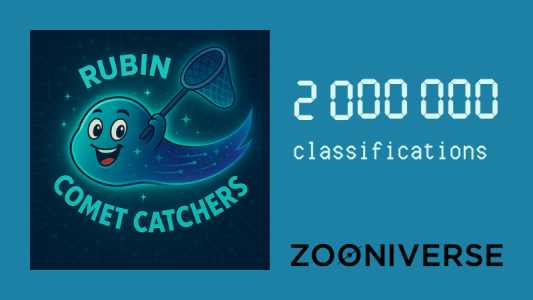Rubin Comet Catchers passes 2 million classifications
Published 7 October 2025

Rubin Comet Catchers racks up 2 million classifications
The first citizen science project using Rubin data is the second most popular project to launch on the Zooniverse platform this year, writes Chris Lintott.
Active asteroids, which have developed comae and occasionally a tail, break down the traditional distinction between comets and asteroids. Activity, which can be very short lived, might be induced when an object on an elliptical orbit swings closer to the Sun, or by more dramatic events such as collisions. Cataloguing such events will help us understand the composition, dynamics and behaviour of the Solar System's small bodies, and the results of the project so far confirmed that volunteers are perfectly capable of avoiding false positives, and identifying activity when it's present – interstellar comet 3I/ATLAS, observed during science verification, was added to the dataset and correctly identified by participants. Perhaps more importantly, it confirmed that there's a large crowd of volunteers who are excited to spend their time helping with analysis of data from our observatory.
Zooniverse and Rubin citizen science are supported by the LSST:UK project. As Comet Catchers PI Colin Chandler says: “Citizen Science will play a crucial role in the success of LSST-scale science, including here at home in our own solar system. The large number of volunteers eager to participate in early Rubin science embodies the public’s excitement to be part of this once-in-a-generation leap forward in astronomical surveys. Engaging the public in the largest astronomical survey ever undertaken is absolutely exhilarating for everyone involved, from volunteers to the Observatory itself.”
Professor Chris Lintott is a co-founder of the Zooniverse.